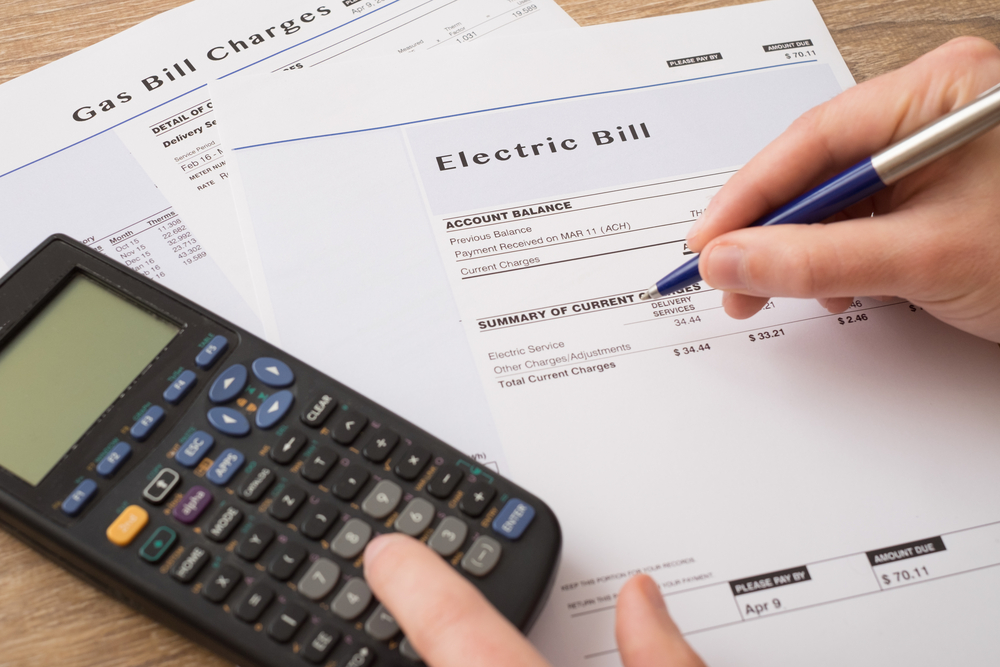How to Use an Electricity Cost Calculator
Your electricity usage probably varies throughout the year. Households that have electric HVAC may see costs surge during months where temperatures are extreme (either hot or cold).
Now, however, as shelter-in-place restrictions mandate that most everyone stay at home, we may be using more electricity thanks to all the extra screen time and our need to light up our virtual workspaces.
If you’re worried that all those extra plugs will electrocute your budget, an electricity cost calculator can help you understand the cost of those currents streaming through your home.
Each gadget and appliance uses a different amount of electricity. Larger appliances like stoves and ovens or washing machines likely zap a lot more electricity than a cell phone charger. How do you know how much electricity all those items in your home are using, though?
Thankfully, there’s an easy equation to calculate your costs: wattage x daily use (hours) x cost per kWh. Each electrical item requires its own wattage, and, of course, some devices or appliances are used more than others. The only real consistent of this electrifying equation is cost, but even this price varies by state. Homeowners in Oklahoma and Louisiana have the cheapest rate—less than 9 cents per kWh. Those living in Hawaii, however, pay more than 30 cents per kWh.

A Simple Electricity Bill Calculator
The equation serves as a simple electricity bill calculator and may help you understand how much energy each electrical item in your house wastes each day. This allows you to make adjustments to lower your electricity bill. You also could save money using higher energy items during off-peak hours.
Homeowners also should avoid phantom electrical leeches. These are items that are sucking electricity but aren’t in use. To zap those energy leeches, unplug any device (or appliance) that you don’t use each day. Obviously, you’ll need to keep washers/dryers, dishwashers and other major household appliances fueled with electricity. However, you should unplug lamps, power strips, televisions not in use and any other devices.
Other changes you can make to lower your costs include:
- Turning off lights when you leave a room
- Nudging the thermostat a few degrees (up or down, depending on the weather)
- Using a ceiling fan to help circulate airflow
- Adjusting the hot water heater temperature
- Using natural sunlight to brighten your workspace
How to Estimate Electricity Bill Using Wattage
One of the biggest variables in determining electrical cost is the wattage of the appliance or gadget. How do homeowners find the wattage for each of these items in order to estimate electricity bill costs?
For many appliances, the wattage may be printed on the outside (for microwaves, check the inside door). Homeowners also can check their manuals or use the model number and search online. Many sites provide wattage estimates for each appliance type. If you’re buying a new appliance, look for energy saving features!
Time is Important, Too!
The longer you use an appliance, the higher your cost. This is especially true for larger appliances with higher wattage. For this reason, when you understand your costs, you may want to think about decreasing the time you use each item.
Think about your habits. Are you running multiple loads of dishes a day? Or maybe you’re doing several loads of laundry. Both appliances could be massive electricity costs. When doing dishes or laundry, make sure you’re only washing full loads.
While dishwasher temperatures are typically set, you can control the temperature of your laundry cycles. Wash clothes on the coolest setting possible, as this saves the cost of heating the water. If you’re water heater is electrical, washing clothes on cold could be a major money saver.
Some of our bad habits also contribute to electric waste. Do you leave the television on for background noise? Even menial habits like keeping our phones or devices charging throughout the day could suck electricity.
If you’re using incandescent bulbs, switch to LED. Many homeowners may have a stash of incandescent bulbs that they continue to use. Unfortunately, these bulbs are outdated and waste money.
Home Energy Audits Help Homeowners Understand Electrical Drains
Homeowners also can download Benefyd and use the app to conduct a home energy audit. Benefyd helps homeowners uncover other energy drains throughout each room and provides tips on how to lower costs. The app also provides information on rebates that homeowners also could use to decrease energy costs.
How does it work? Homeowners take a snapshot of each room—a home selfie! The app then prompts users to enter other information about each room to help Benefyd in providing an accurate energy cost-savings diagnosis.
Use This Electricity Cost Calculator!
Ready to save money on your monthly electricity bill? Use the widget below and start estimating how much all those devices and appliances are costing you each month. Then conduct a home energy audit and start removing those energy leeches!


